SLUSFL7 August 2024 LMR51606-Q1 , LMR51610-Q1
PRODUCTION DATA
- 1
- 1 Features
- 2 Applications
- 3 Description
- 4 Device Comparison Table
- 5 Pin Configuration and Functions
- 6 Specifications
- 7 Detailed Description
-
8 Application and Implementation
- 8.1 Application Information
- 8.2
Typical Application
- 8.2.1 Design Requirements
- 8.2.2
Detailed Design Procedure
- 8.2.2.1 Custom Design With WEBENCH® Tools
- 8.2.2.2 Output Voltage Setpoint
- 8.2.2.3 Switching Frequency
- 8.2.2.4 Inductor Selection
- 8.2.2.5 Output Capacitor Selection
- 8.2.2.6 Input Capacitor Selection
- 8.2.2.7 Bootstrap Capacitor
- 8.2.2.8 Undervoltage Lockout Setpoint
- 8.2.2.9 Replacing Non Sync Buck Converter
- 8.2.3 Application Curves
- 8.3 Power Supply Recommendations
- 8.4 Layout
- 9 Device and Documentation Support
- 10Revision History
- 11Mechanical, Packaging, and Orderable Information
Package Options
Mechanical Data (Package|Pins)
- DBV|6
Thermal pad, mechanical data (Package|Pins)
Orderable Information
6.7 Typical Characteristics
VIN = 24V, fSW= 400kHz, TA = 25°C, unless otherwise specified
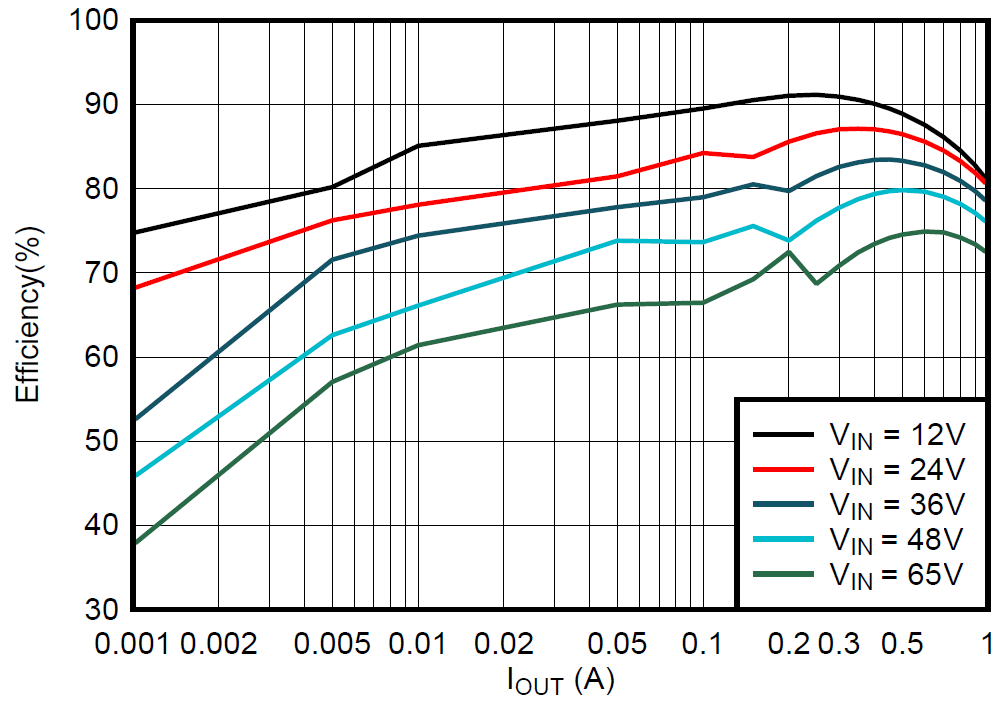
| fSW = 400kHz | VOUT = 3.3V | LMR51610X-Q1 |
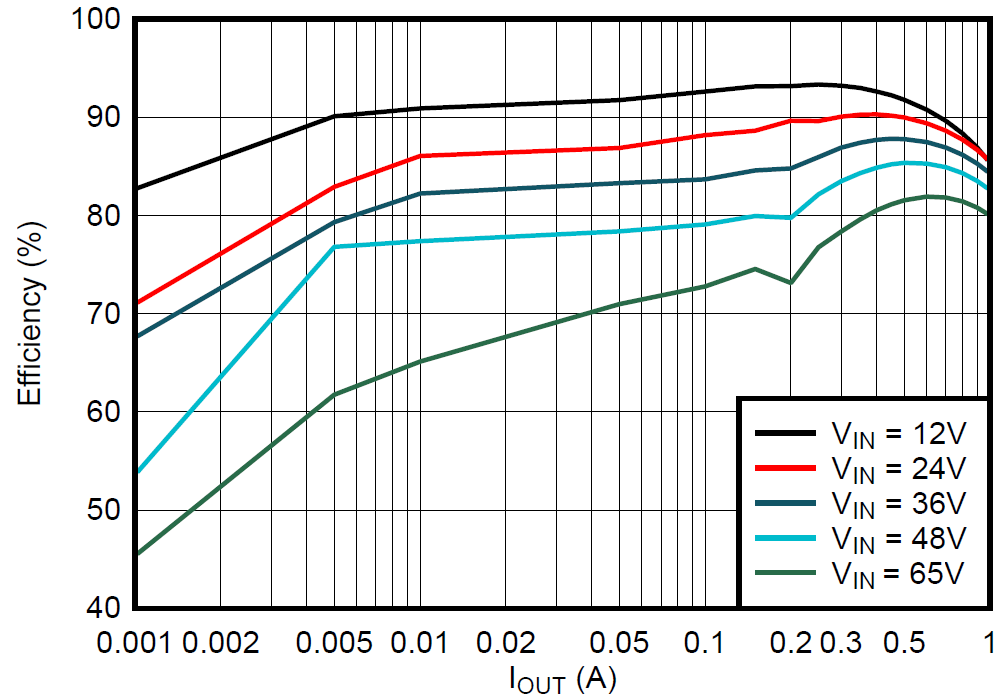
| fSW = 400kHz | VOUT = 5V | LMR51610X-Q1 |
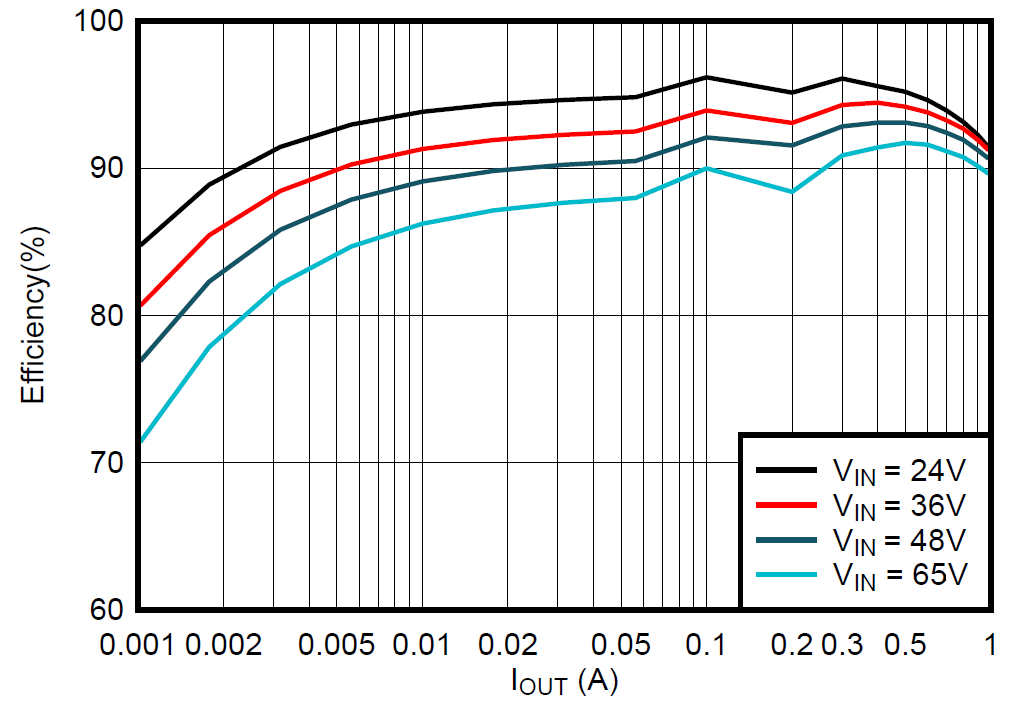
| fSW = 400kHz | VOUT = 12V | LMR51610X-Q1 |

| fsw = 400kHz | VOUT = 5V | LMR51610X-Q1 |
 Figure 6-9 VIN Quiescent Current Versus Temperature
Figure 6-9 VIN Quiescent Current Versus Temperature Figure 6-11 Reference Voltage Versus Temperature
Figure 6-11 Reference Voltage Versus Temperature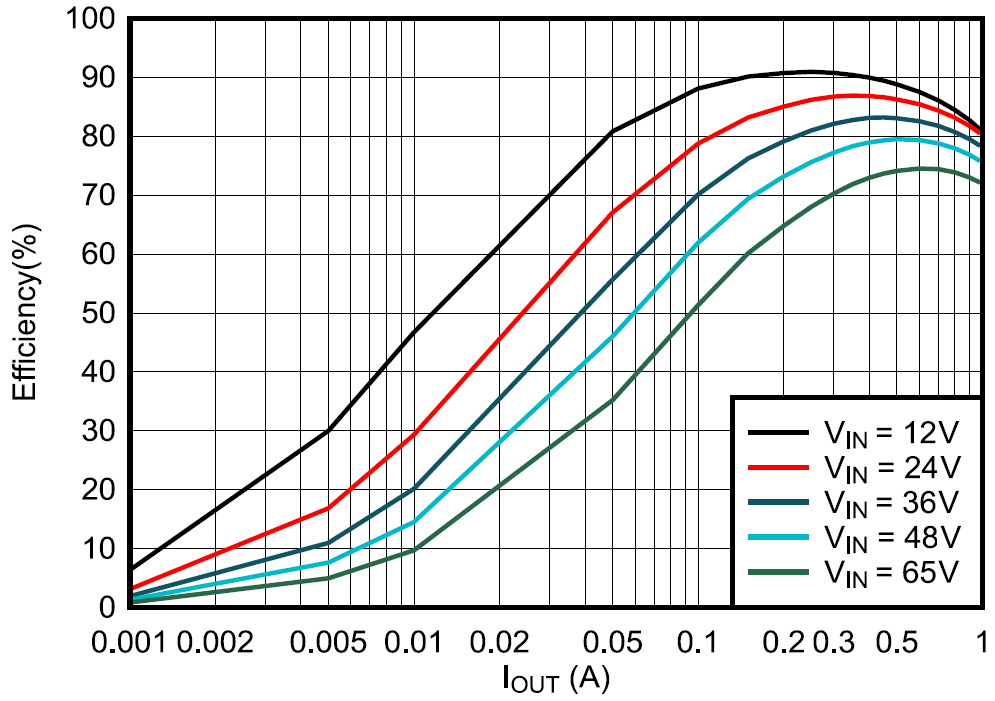
| fSW =400kHz | VOUT = 3.3V | LMR51610XF-Q1 |
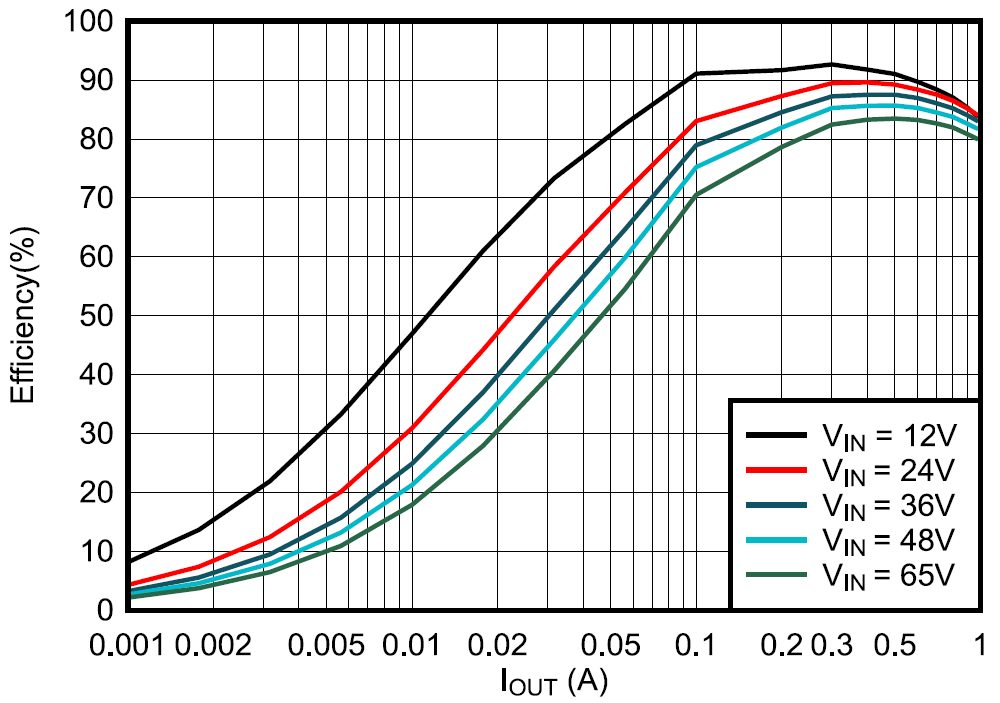
| fSW = 400kHz | VOUT = 5V | LMR51610XF-Q1 |
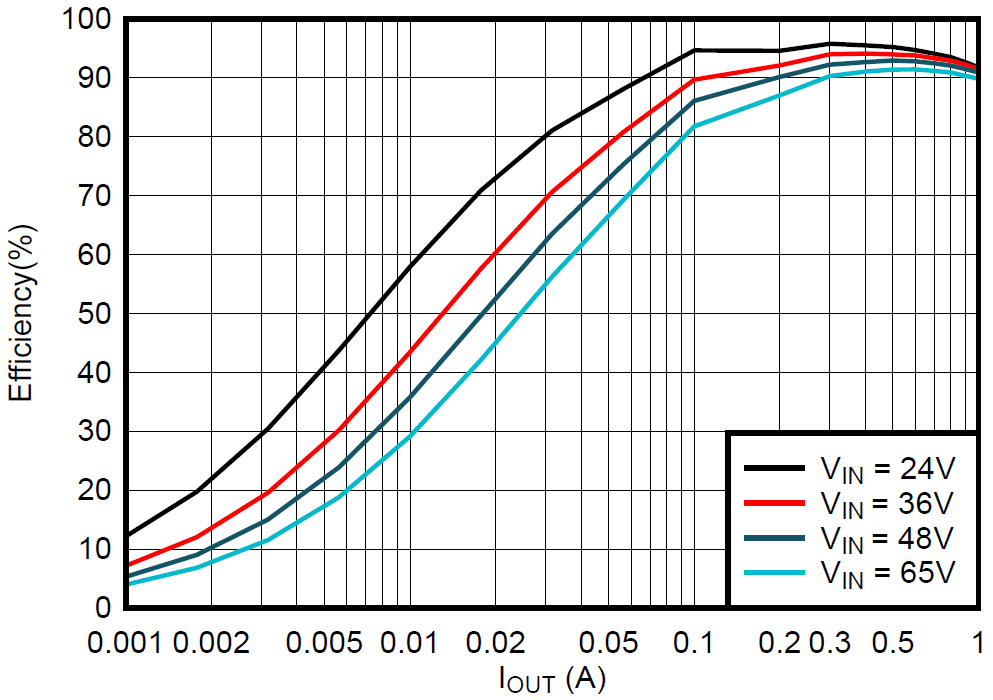
| fSW = 400kHz | VOUT = 12V | LMR51610XF-Q1 |

| fSW = 400kHz | VOUT = 3.3V | LMR51610X-Q1 |
 Figure 6-10 VIN UVLO Versus Temperature
Figure 6-10 VIN UVLO Versus Temperature Figure 6-12 HS and LS Current Limit Versus Temperature
Figure 6-12 HS and LS Current Limit Versus Temperature